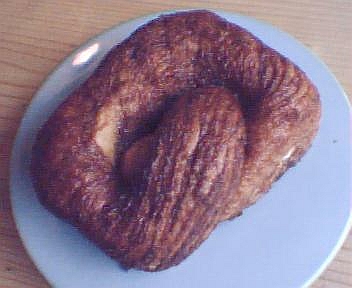On the last 24th December, I received an email from my friend Carla who lives in the North of Portugal, in
Oporto.
She was telling me how she would spend the Christmas Eve and what kind of sweet desserts she was preparing with her family.
In the mail, she referred
Mexidos, explaining that it's a mix of nuts,hazelnuts and almonds, a typical dessert from the city of
Braga [capital of
Minho province, located in the North of Portugal] where her maternal family comes from.
"Oh, Dear!" I thought, "I think I will like it very much!!". So, I asked Carla if she could send me the recipe.
I must say I wasn't expecting a reply on that day because the 24th is a very busy day in the Portuguese family's kitchens with all the preparations for the Christmas Eve's meal.
However, Carla sent it on that day. I liked the way she began the mail: "My sister is cooking the "Mexidos" and I'm sitting at the kitchen table writing the recipe for you :-)". Very sweet of her!
We didn't have the time to prepare it for the Christmas Eve because we were busy already with the cooking of the "Bacalhau a Lagareiro", the main course of that day, as well as other Portuguese desserts. Our friends from Romania would be here soon to spend the Christmas Eve with us.
On the 25th, we went to their home and during all day, we only tasted delicious Romanian food.
So, we ate the
Mexidos on the 26th, a more quiet day and the second Christmas day in the Netherlands [Boxing Day]. :-)
We went to the supermarket to buy what was missing for the recipe and after a while, we were eating
Mexidos and watching, relaxing on the sofa,
A Christmas Carol of Charles Dickens. ;-)
What a
Gezellig [
acolhedora/cosy] afternoon, don't you think? :-)
After feeding the ducks in the lakes on our way to the supermarket, it was the most cosy moment of this Christmas afternoon :-)
I hope you enjoy this recipe! It's just delicious! Thanks again, Carla!
Recipe:
Pour in a pan 2 liters of water and add a cinnamon stick, a lemon peel, 6 spoons of honey, 2 shots of port and sugar to taste.
Heat it to a boil. Meanwhile, cut a rustic bread (white thick bread) in very thin slices and add them to the mix.
Stir until the bread completely disintegrate into dough (it might be good to initially add just enough bread to soak all the liquid, and only add more bread if you see the mix is not thick enough).
Add nuts, hazelnuts, almonds, pine nuts and raisins to the mix (how much is up to you), and stir for 2 minutes.
Take it from the heat, pour it into dishes and sprinkle it generously with cinnamon powder.
Eat it hot (I think it's better :))
Receita:
Levar ao fogão 2 litros de água, um pau de canela, uma casca de limão, 6 colheres sopa de mel, açucar a gosto, 2 cálices de Vinho do Porto. Deixar ferver.
Cortar muito fininho o pão rustico.
Deita-se na mistura e mexe-se até se desfazer por completo.
Deitam-se frutos secos (avelãs, nozes, amêndoas, uvas passas , pinhões) e mexe-se durante 2 minutos .
Retira-se do fogão, deita-se em pratos e polvilha-se com canela.
Bom Proveito!/ Eet smakelijk!/ Enjoy your meal!

